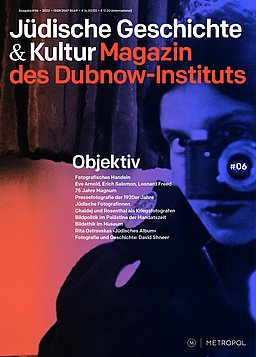Possibilities of and Limitations to Jewish Participation in Saxon Institutes of Higher Education
Graduates from Chemnitz, Dresden, Freiberg, and Mittweida (1850–1950)
The nineteenth century did not only witness the formal legal emancipation of Jews in Saxony, it also offered them new professional and personal opportunities. Access to higher education in particular offered possibilities for social advancement and participation. With the institutes for higher education in Chemnitz, Dresden, Mittweida, and Freiberg, Saxony was home to four renowned academic institutions with a technological profile. As training centers for specialized workers in fields such as mining sciences, engineering, machinery, and electronics, these institutions played an important role in the economic development of the state and neighboring regions. This project will investigate how attractive these institutes of higher education were for domestic and foreign Jews, including as places to study. It will also address what possibilities these institutions offered for participation and at the same time what institutional mechanisms of exclusion were at work there and what unofficial hurdles Jews were faced with in the academic system and in their professional careers during various periods.
As the Jewish history of these institutions has only been rudimentarily researched to date, the project will undertake foundational source-based research in these institute’s archives. This will focus above all on the discovery and analysis of core quantitative demographic data relating to the student body, especially the proportion of Jewish students over time, their geographic and social backgrounds, and their preferred courses of study. Following this, deeper research will be dedicated to a selection of individual biographies. Of particular interest are not only the hopes connected to the commencement of studies alongside professional success stories, but also failed ambitions and aborted careers. Aside from the historical contextualization of the findings, the case studies will allow for heterogeneous academic and professional paths to be paradigmatically reconstructed and thus to generate a nuanced overall picture of the checkered Jewish history of Saxony between 1850 and 1950. The example of educational history allows for the ambivalence of societal modernization and the process of Jewish emancipation in Saxony to be retraced alongside the pivotal role played by this state between Eastern and Western Europe.
As part of the collaborative project »DIKUSA,« this project combines classic historiographical methods with those of the Digital Humanities. Aside from establishing a Digital Asset Management Tool at the Dubnow Institute, a data collection tool will be developed at the Saxon Academy of Sciences in Leipzig in collaboration with KompetenzwerkD, which will allow among other things for the students’ data to be recorded in a standardized format and for the information to be compared and augmented through reconciliation services with other databases. A selection of data and research findings will subsequently be presented on the Virtual Map Forum of the SLUB and on an individual website. The latter platform will also serve to make a selection of materials (maps, statistics, and key sources) available to researchers, teachers, and the general public.
Research project at the Dubnow Institute within the framework of the collaborative project »Networking Digitized Cultural Data in Saxony – The Development of a Technical Infrastructure for Research on Mobility, Migration, and the Transformation of Places, People, and Artefacts (in Temporal and Spatial Perspective) – DIKUSA«



